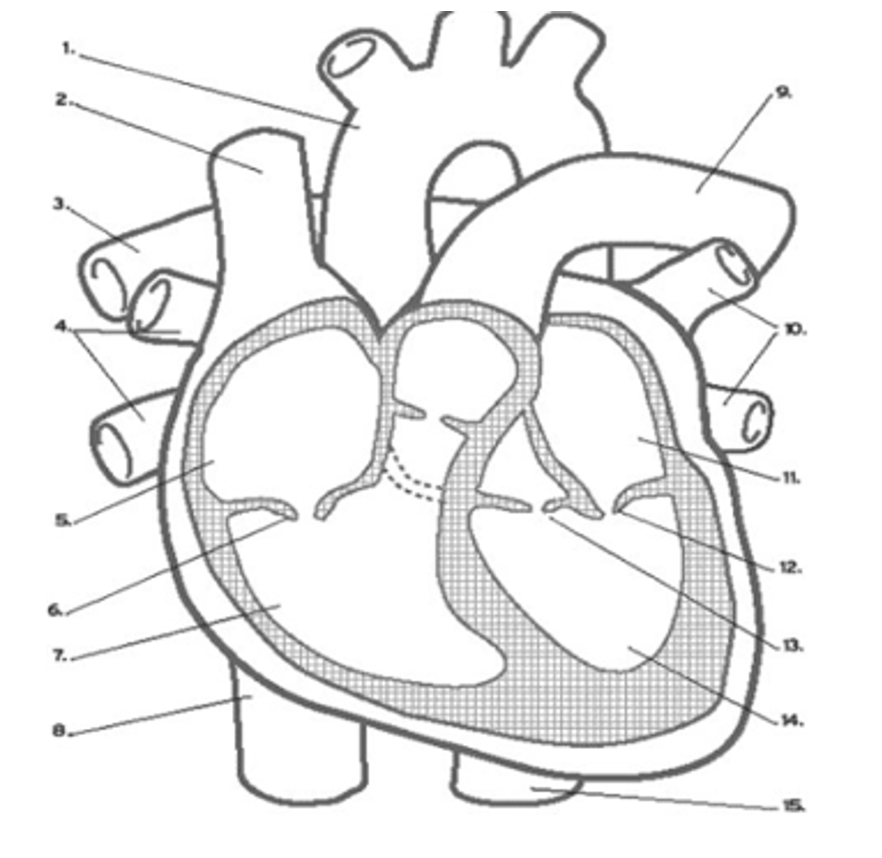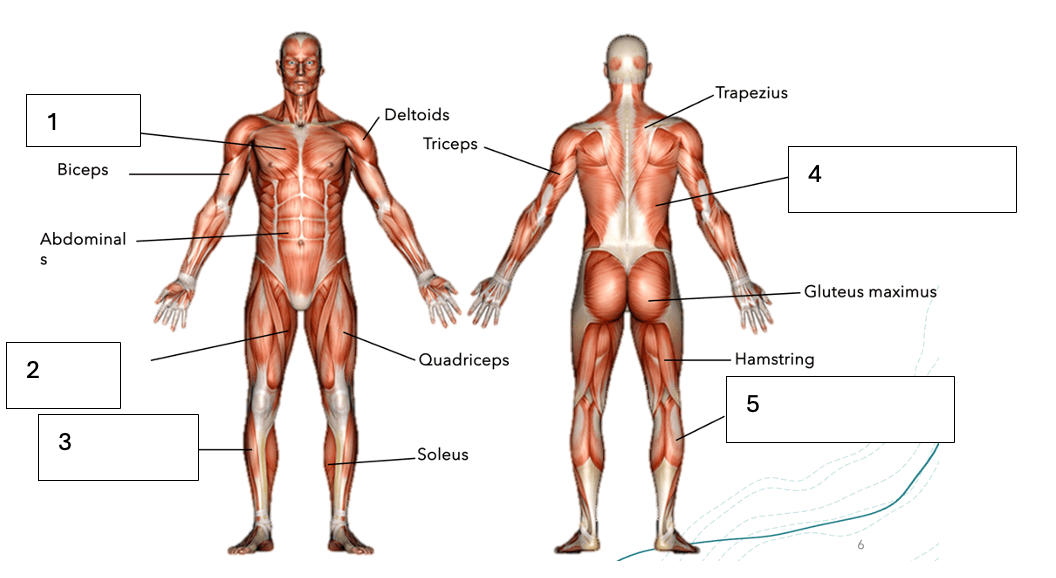List the 6 elements of a training session
(double points if you list the elements in the correct order)
1. warm up
2. fitness session
3. skill development
4. culmination
5. cool down
6. evaluation
the circulatory system carries (blank) around the body
blood
name one function of the respiratory system
1. To deliver oxygen from the atmosphere to the lungs
2. To provide gaseous exchange in the lungs
3. To create speech
4. Facilitate the sense of smell
list 3 bones in the skeletal system
Cranium (skull)
Mandible (jaw)
Clavicle
Scapula
Ribs
Sternum
Vertebrae
Pelvis
Sacrum
Humerus
Ulna
Radius
Carpals
Metacarpals
Phalanges
Femur
Patella
Tibia
Fibular
Tarsals
Metatarsals
Phalanges
list the 3 types of muscles
skeletal muscle
cardiac muscle
smooth muscle
name 3 types of movement
flexion
extension
abduction
adduction
rotation
plantar flexion
dorsi flexion
pronation
supination
What are Fitts and Posner's 3 phases of learning?
1. Cognitive Phase
2. Associative Phase
3. Autonomous Phase
what part of the heat is labelled 6?
double points if you can tell me its function!
tricuspid valve
Function: control the flow of blood from the right atrium to the right ventricle, ensuring blood flows in the correct direction within the hear
during inspiration, the diaphragm contracts, move downwards and flattens
name the 2 bones in your forearm
radius
ulnar
what are the 4 functions of the muscular system?
1. movement
2. posture
3. joint stability
4. maintain bodily functions
TRUE OR False:
plantar flexion involves flexion at the ankle so the foot points more superiorly
FALSE
plantar flexion involves flexion at the ankle so the foot points more inferiorly
What are the four classifications of motor skills?
1. Muscle involvement
2. Environmental Impact
3. Continuity
4. Complexity
1. transport nutrients
2. regulation of body temperature
3. protection of the body
4. regulation of body fluid content
Oxygen and carbon dioxide pass between the capillaries and alveoli via...
diffusion
the axial skeleton is made up of what 3 parts?
skull
spine
thorax
TRUE OR FALSE:
tendons connect bone to muscle
FALSE - tendons connect bone to another bone
describe the difference between abduction and adduction
adduction = movement toward the midline of the body
abduction = movement away from the midline of the body
Multiple Choice:
which of the following is NOT a characteristic of fine motor movement?
a) small movements
b) incorporate many body parts and segments
c) precision and control
d) incorporate specific body parts
b) incorporate many body parts and segments
veins carry blood back towards the heart
TRUE
fill in the blanks:
during gaseous exchange when oxygen enters the alveoli via the lungs
the blood in the capillaries around the alveoli is high in (...................) and low in (....................)
high in carbon dioxide
low in oxygen
the appendicular skeleton is made up of what 4 parts?
arms
legs
shoulder girdle
pelvis girdle
Multiple choice:
which of the following is NOT a characteristic of cardiac muscle?
a) striated and branched
b) involuntary
c) long and spindle shaped
d) relaxes and contracts rhythmically and continuously
c) long and spindle shaped
what are the names of the type of motions that involve rotations of the hand and forearm so the palm faces upward or downward?
pronation - downwards
supination - upwards
Multiple Choice:
which of the following sports is not an example of a serial movement
a) tennis serve
b) high jump
c) basketball lay-up
d) gymnastics routine
a) tennis serve
describe, the order of blood flow through the heart
1. Superior and inferior vena cava
2. Right atrium
3. Right ventricle
4. Pulmonary artery
5. Lungs
6. Pulmonary vein
7. Left atrium
8. Left ventricle
9. Ascending and descending aorta
list 3 things that occur during expiration
1. the diaphragm relaxes and returns to its dome shape
2. ribs return to their original position
3. pressure in the chest cavity is therefore increased, and air is forced out from the lungs
what are the functions of the axial and appendicular skeleton
axial skeleton: Form the basic central structure to support the remainder of the skeleton
appendicular skeleton: Support the limbs and attach them to the body.
label the muscles 1-5
1. pectorals
2. adductor group
3. tibialis anterior
4. latissimus dorsi
5. gastrocnemius
describe the differences between the sagittal, transverse and frontal anatomical planes
sagittal - cuts the body into left and right halves
transverse - cuts the body into top and bottom halves
frontal - cuts the body into front and back halves